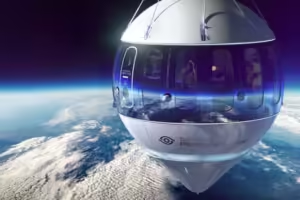The current situation on Boeing’s Starliner brings back the memory of NASA’s “successful failure” Apollo 13 mission that stunned everyone 54 years ago.
NASA astronaut Sunita Williams laughs with relatives as she leaves the Operations and Checkout building before heading to Space Launch Complex 41 to board the Boeing’s Starliner capsule atop an Atlas V rocket for a mission to the International Space Station at the Cape Canaveral Space Force Station, Monday, May 6, 2024, in Cape Canaveral.
Will astronauts ‘Sunita Williams and Barry Wilmore’ who are spending overtime on Boeing’s Starliner capsule, ever return from space?
Earlier this week, Reuters cited sources as saying that Starliner’s latest targeted return date is July 6. This would mean that the mission, originally planned for eight days, would last a month.

The current ‘situation on Boeing,s Starliner’ brings back the memory of the National Aeronautics and Space Administration’s (NASA) “successful failure” mission that stunned everyone 54 years ago.
Marred by an explosion on a spacecraft, three astronauts were left “swinging around the moon”, over 2,05,000 miles away from Earth. The year was 1970, the ‘mission was Applo 13 and the US third attempt to’ land to land on the Moon, near the crater Fra Mauro, had turned into a survival challenge for the crew.
‘Houston, We’ve Had a Problem’ – the phrase that has now become famous was radioed from Apollo 13 to Mission Control upon a catastrophic explosion that dramatically changed the mission. Three things were “absolutely necessary” for the survival – team work, good leadership and initiative to think out of the box.

This prompted the crew in space and mission managers in Houston to spend more time than expected pursuing fixes mid-mission. NASA officials were quoted as saying that they want to better understand the cause of the thruster failures, valve issue and helium leaks before Starliner begins its return.
Now, here’s a throwback to the Apollo 13 mission and the story behind the incredible journey of its crew, who raced against the time and space to return to Earth after a failed moon-landing attempt.

Meet the Apollo 13 heroes
Before delving into Apollo 13’s incredible journey back to Earth, meet the heroes behind the safe landing of the three-membered crew. The three astronauts who battled for their life in space were Jim Lovell (Hanks), Fred Haise (Paxton), (Bacon).
Commander Jim Lovell and Lunar Module Pilot Fred Haise were scheduled to land on the Moon in the lunar module Aquarius on April 15 and explore the Fra Mauro region for 33 hours. Command Module Pilot Swigert was supposed to remain in lunar orbit in the command module Odyssey. The crew would have returned to Earth on April 21.
But their journey was cut short by four days after an explosion rocked the spacecraft and put their life at risk. The ground crew at Mission Control, along with astronaut Ken Mattingly (Sinise) and flight director Gene Kranz (Harris), raced against time to bring the astronauts back home.

A loud bang
John “Jack” Swigert, Fred Haise and James Lovell felt a “little vibration” just 5-1/2 minutes after the Apollo mission launched into the space, NASA reported.
Two days into the journey, the crew made a live TV broadcast from space, soon after which mission control asked Swigert to “flip a switch to perform a routine stir of the spacecraft’s oxygen tanks”.
We heard this loud bang, which kind of reverberated with a little echo because the vehicles we were in were metal vehicles. It was kind of…you in a big barrel and hit on the side with a sledgehammer kind of sound. In the tunnel area, some of the metals were actually crinkling – kind a like you take a coke can and squeeze it,” an astronaut explained.

Sunita Williams may have to wait for months before returning to Earth
Sunita Williams and Butch Wilmore’s space programme was supposed to be of few days. However, their return flight from Boeing Starliner is likely to be delayed for months, reported ANI.
NASA’s Commercial Crew Program manager, Steve Stich has said that the US space agency is considering extending the duration of Starliner’s mission from 45 days to 90 days, reported ANI citing CNN.

On Friday, Stich said that NASA is considering extending the maximum length of Starliner’s mission from 45 days to 90 days and there is no firm return date on the horizon, according to CNN report.
Addressing a briefing on Friday, the NASA official said, “We’re just looking at the timeline to execute (the test in New Mexico) and then review the data.” He further said, “And that’s what’s really the long pole, I would say, determining a landing date.” Stich added, “We’re not in a rush to come home.”







Leave a Reply